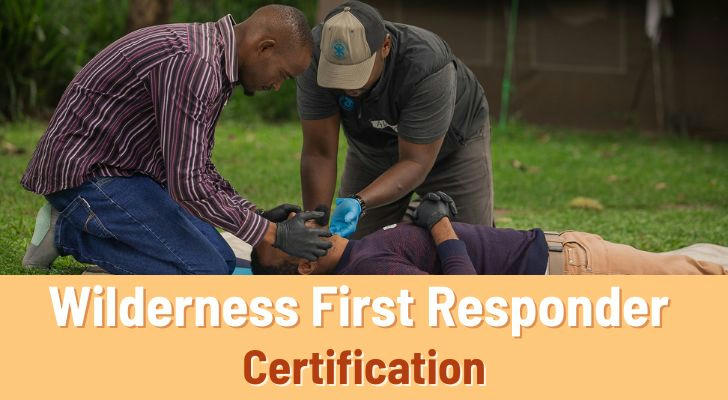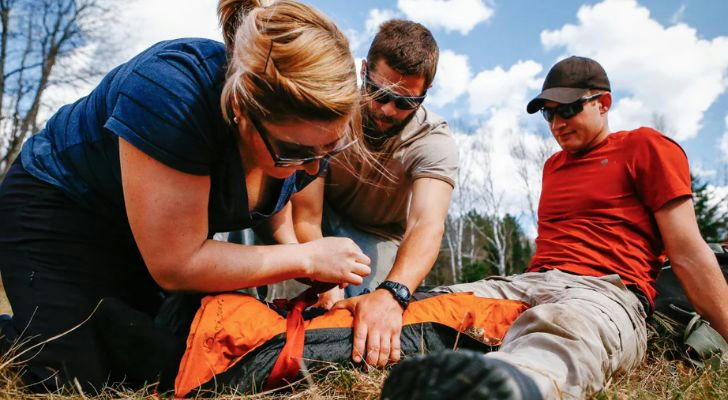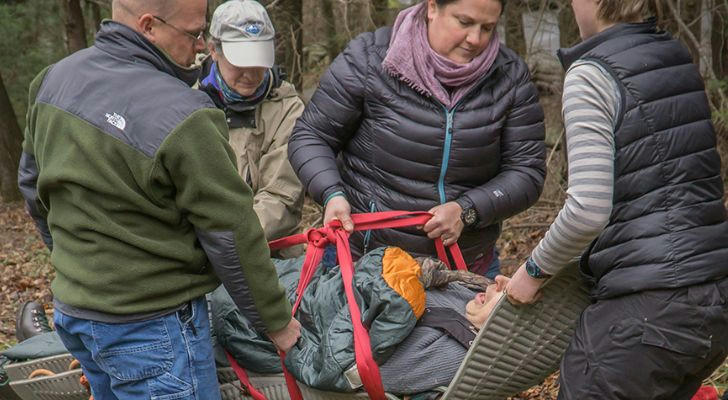Wilderness First Responder Certification: Corporate Sponsorship Helps You Be a Rescue Hero!
In the United States, outdoor activities such as mountaineering, hiking, and camping have seen a tremendous surge in popularity. As more individuals embrace nature, the need for reliable and effective emergency care in remote environments becomes increasingly important. The Wilderness First Responder (WFR) certification has emerged as the gold standard for outdoor first aid, offering a pathway for national park volunteers, wilderness explorers, and even newcomers to the field of Search and Rescue (SAR) to gain the critical skills necessary to save lives. With state governments and non-profit organizations providing training subsidies and corporate scholarships, the WFR certification is not only a powerful educational tool but also an accessible one. This article delves into the structure, duration, cost, employment prospects, and practical challenges of the WFR course, complete with real-life cases and step-by-step registration guidelines.

What Is WFR Certification and Why Is It So Important?
Wilderness First Responder (WFR) is among the most recognized certifications in the field of wilderness first aid. Organizations such as the National Outdoor Leadership School (NOLS Wilderness Medicine) and Wilderness Medical Associates (WMA) endorse these programs, ensuring that the curriculum meets stringent international standards. Unlike conventional urban first aid courses, WFR focuses on providing care in remote and often harsh environments. From treating fractures and hypothermia to managing altitude sickness and animal bites, the WFR certification equips participants with the expertise to handle emergencies when immediate professional help is not available.
For professionals such as outdoor educators, adventure guides, and even forestry workers, this certification is an essential tool. It not only increases their competence and confidence but also reinforces public safety in areas where medical facilities are few and far between.
Course Overview: Duration, Content, Fees, Pass Rate, and Employment Prospects
🕒 Course Duration and Content Overview
WFR courses in the U.S. typically run for 8 to 10 days, with daily sessions lasting around 8 hours. Many institutions now offer a hybrid model—a mix of online and in-person training—to accommodate those with busy schedules. The comprehensive curriculum covers a wide array of topics, including:
Initial Assessment and ABC Evaluation: Quickly determining the airway, breathing, and circulation status of an injured person.
Trauma Management: Techniques for controlling bleeding, immobilizing fractures, and treating wounds.
Environmental First Aid: Addressing conditions like hypothermia, hyperthermia, and severe allergic reactions.
Field Handling and Equipment Management: Proper use and maintenance of a first aid kit, and safe methods of transporting injured persons.
Realistic Scenario Simulation: Hands-on exercises and role-playing to transform theoretical knowledge into practical skills.
This blend of theory and practice is designed to enhance emergency response capabilities, ensuring that every participant is well-prepared to act decisively under pressure.
💰 Course Fees and Subsidy Information
The cost of obtaining WFR certification in the United States usually falls between $700 and $1000 USD. However, several financial assistance options can help mitigate these expenses:
Government Subsidies: Some county governments and forestry bureaus—particularly in states like Colorado and California—offer professional development training subsidies that cover part of the course fees.
Corporate Scholarships: Esteemed organizations such as REI, Outward Bound, and NOLS provide scholarships targeted at specific groups, including minorities, veterans, and educators. These scholarships can range from modest awards of around $100 to full tuition coverage.
Veterans' Benefits: Eligible veterans may also receive financial support through the Post-9/11 GI Bill®, which can be used to offset educational costs.
These financial aids are designed to make the certification more accessible, ensuring that those passionate about outdoor safety have the opportunity to gain these life-saving skills.
📈 Pass Rate and Employment Prospects
Data from NOLS and WMA reveal that the WFR certification course boasts a high pass rate—typically between 92% and 95%. This success is largely due to the course’s focus on practical operations and continuous assessment, which ensure that only those with a solid grasp of the material receive their certification.
With a WFR certification, job seekers gain a significant advantage in various fields. These include positions within national park systems, non-profit outdoor education organizations, adventure travel companies, and Search and Rescue teams. According to a report from the Outdoor Industry Association, individuals with WFR certification enjoy an employment rate that is more than 30% higher compared to their non-certified counterparts. This statistic underlines the certification’s value not only as a life-saving skill but also as a key career enhancer.

Real-Life Success Story: From Hiking Enthusiast to Professional First Aid Coach
Consider the case of Jason Miller from Utah—a passionate backpacker whose journey epitomizes the transformative power of the WFR course. In 2021, Jason enrolled in a WFR course hosted by NOLS. Benefiting from a $500 scholarship sponsored by Patagonia, he was able to participate in the training with minimal financial strain.
Reflecting on his experience, Jason shared:
"When I first participated in the simulated mountain rescue, I realized that this course was not only about saving others, but also about saving myself. Three months later, I successfully handled a hypothermia emergency while on a volunteer patrol in Grand Teton National Park. Without WFR, I would never have known what to do."
Today, Jason serves as a WFR assistant instructor and is preparing to pursue a higher-level Wilderness EMT (Wilderness Emergency Medical Technician) certification. His journey underscores how the WFR certification can serve as a stepping stone to a rewarding career in outdoor emergency services.
Career Challenges and Potential Risks: Are You Ready?
While the WFR certification offers immense benefits and opens doors to rewarding career paths, it also comes with significant challenges and risks. Here are some key considerations:
Uncontrollable Environments: Outdoor rescue operations frequently occur in unpredictable conditions—ranging from severe weather to challenging terrains. These factors can complicate rescue efforts and increase the risk of secondary injuries.
High Mental and Physical Stress: The responsibility of making split-second decisions in life-or-death situations can place considerable mental and physical stress on responders. Continuous exposure to such high-pressure environments requires strong resilience and emotional fortitude.
Heavy Responsibility and Legal Risks: Even though WFR-certified individuals are not medical doctors, their decisions in emergency situations can have a profound impact on the lives of others. This responsibility can bring about legal implications and heightened accountability.
Continual Skill Maintenance: The certification is typically valid for only two years, after which re-certification or additional training is necessary. Keeping skills up-to-date in a rapidly evolving field demands ongoing commitment and practice.
Before deciding to pursue this certification, it is essential to weigh these challenges carefully and consider whether you have both the passion and the resilience to thrive in this demanding field.
Registration Process and Suggestions: How to Take the First Step
If you’re eager to embark on this journey and become a guardian of outdoor safety, here are the recommended steps to register for a WFR course:
Choose a Certification Agency:
Research and select a recognized institution, such as NOLS, Wilderness Medical Associates, or SOLO. Verify that the agency is accredited and that its curriculum meets national and international standards.
Check for Scholarships and Subsidies:
Visit the official websites of the certification agencies to explore available government subsidies, corporate scholarships, or veterans’ benefits. Make sure to understand the eligibility criteria and application process for these financial aids.
Select the Course Format and Schedule:
Decide whether a hybrid (online and in-person) or a traditional face-to-face course best suits your lifestyle and learning preferences. Confirm the course schedule to ensure it aligns with your availability.
Sign Up and Prepare Your Equipment:
Once you have chosen your course, complete the registration process. Most courses require you to bring basic outdoor gear, including a first aid kit, waterproof clothing, and other essential items. Make a checklist well in advance.
Engage Actively in Training:
During the course, immerse yourself fully in both the theoretical lessons and practical simulations. Participating actively in scenario-based exercises will help turn theoretical knowledge into life-saving muscle memory.
Pass the Assessments and Obtain Certification:
After completing the course, you must pass a series of practical and written assessments. Once certified, remember that the certification is generally valid for two years. Plan for ongoing training and re-certification to keep your skills current.

Conclusion: Become a Guardian of Outdoor Safety—Start with WFR Today!
The Wilderness First Responder certification is more than just a training course—it’s a gateway to a career filled with purpose, challenge, and the potential to save lives. By equipping yourself with the skills to handle emergencies in remote and unpredictable environments, you not only enhance your personal safety but also become an invaluable asset to communities and organizations that thrive in nature.
The benefits of the WFR certification are manifold:
Expert Training: Gain in-depth knowledge and practical experience in wilderness first aid.
Financial Support: Take advantage of government subsidies, corporate scholarships, and veterans’ benefits.
Career Advancement: Improve your employment prospects in national parks, adventure travel companies, and Search and Rescue teams.
Life-Saving Skills: Be prepared to act decisively in emergencies and help safeguard the lives of others.
Are you ready to step up and become the next outdoor rescue hero?
